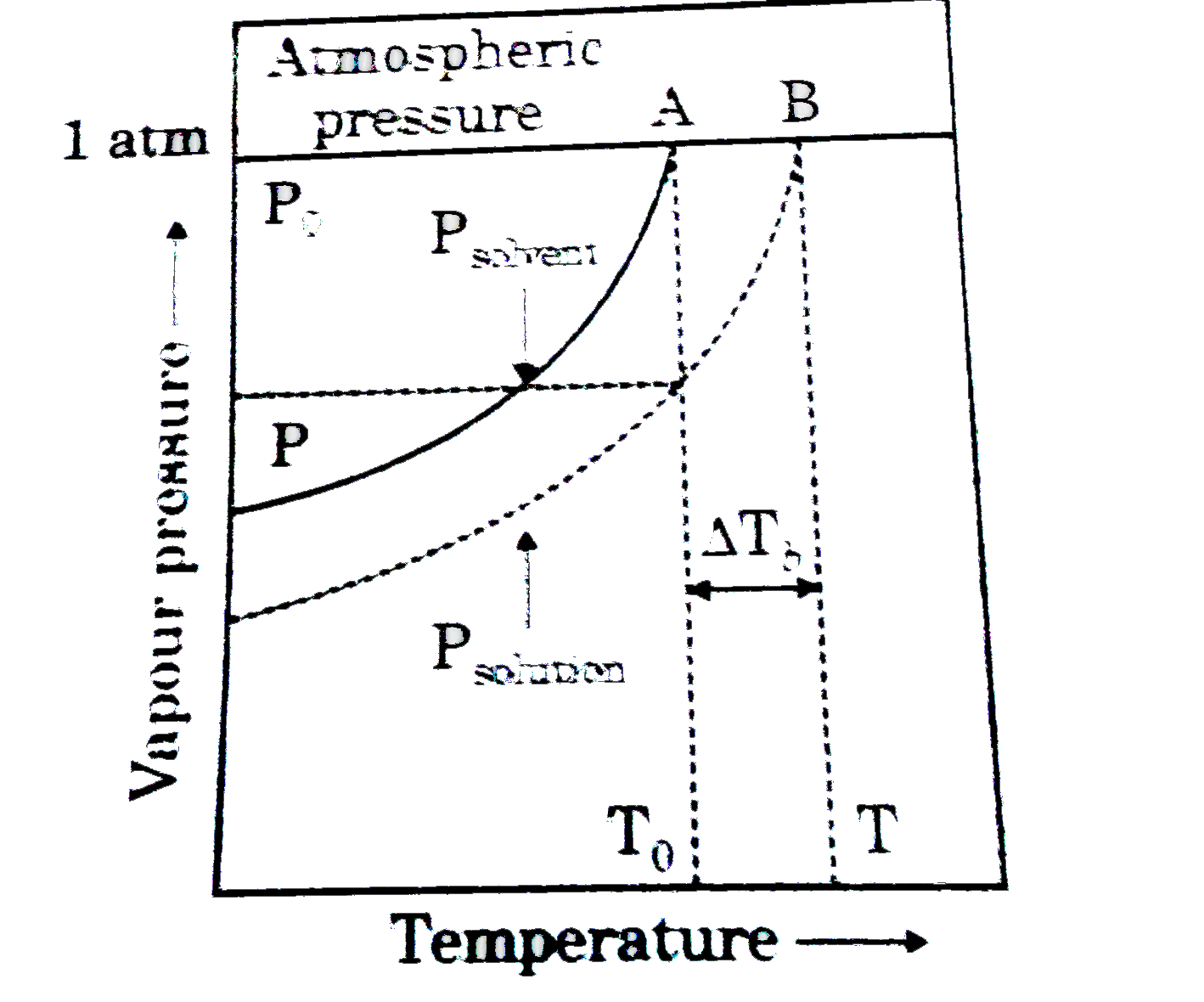2g each of two solutes A and B are dissolved separately in 50g each of the same solvent.
Which will show greater elevation in boiling point?
The solution containing solute B will show greater elevation in the boiling point because ΔTb∝1Mw.
Topper's Solved these Questions
- SOLUTIONSBOOK - CENGAGE CHEMISTRY ENGLISHCHAPTER - SOLUTIONSEXERCISE - Solved Examples
40 Videos
- SOLUTIONSBOOK - CENGAGE CHEMISTRY ENGLISHCHAPTER - SOLUTIONSEXERCISE - Exercises (Linked Comprehension)
58 Videos
- SOLID STATEBOOK - CENGAGE CHEMISTRY ENGLISHCHAPTER - SOLID STATEEXERCISE - Ex 1.2 (Objective)
9 Videos
- SURFACE CHEMISTRYBOOK - CENGAGE CHEMISTRY ENGLISHCHAPTER - SURFACE CHEMISTRYEXERCISE - Archives Subjective
2 Videos
Similar Questions
2g each of two solutes A and B (molar mass of A is greater than that of B) are dissolved separately in 50g each of the same solvent. Which will show greater elevation in the boiling point?
View SolutionWhich solution will show maximum elevation in boiling point?
View Solution5g each of two solutes X and Y ( mol. wt of X>Y) are dissolved in 100g each of same solvent.
View SolutionWhich solution will show maximum elevation in b.pt:
View SolutionWhich one of the following aqueous solutions will exhibit highest elevation in boiling point?
View SolutionIf 30 g a solute of molecular mass 154 is dissolved in 250 g of benzene. What will be the elevation in boiling point of the resuling solution ?
(Given : KB(C6H6)=2.6Kkgmol−1)
View SolutionThe plot given below shows P – T curves (where P is the pressure and T is the temperature) for two solvents X and Y and isomolal solutions of NaCl in these solvents. NaCl completely dissociates in both the solvents.

On addition of equal number of moles of a non-volatile solute S in equal amount (in kg) of these solvents, the elevation of boiling point of solvent X is three times that of solvent Y. Solute S is known to undergo dimerization in these solvents. If the degree of dimerization is 0.7 in solvent Y, the degree of dimerization in solvent X is ______________.
View Solution1g of a non-volatile non-electrolyte solute is dissolved in 100g of two different solvents A and B whose ebullioscopic constants are in the ratio of 1 : 5. The ratio of the elevation in their boiling points, ΔTb(A)ΔTb(B) is
View Solution10 gram of solute with molecular mass 100 gram mol−1 is dissolved in 100 gram solvent to show 0.3∘C elevation in boiling point. The value of molal ebuilioscopic constant will be:
View SolutionFigure explains elevation in boiling point when a non-volatile solute is added to a solvent. Variation of vapour pressure with temperaure and elevation in boiling point is marked.

Elevation in b.p of an aqueous urea solution is 0.52∘(Kb=0.52∘mol−1kg). Hence, mole fraction of urea in this solution is:
View Solution
